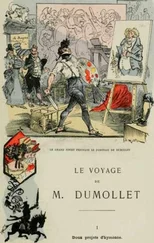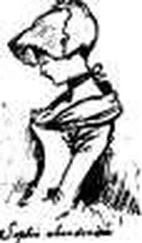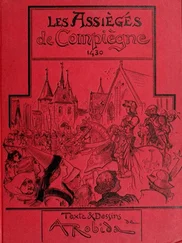Albert Robida - Yester-year; ten centuries of toilette from the French of A. Robida
Здесь есть возможность читать онлайн «Albert Robida - Yester-year; ten centuries of toilette from the French of A. Robida» весь текст электронной книги совершенно бесплатно (целиком полную версию без сокращений). В некоторых случаях можно слушать аудио, скачать через торрент в формате fb2 и присутствует краткое содержание. Жанр: Старинная литература, на английском языке. Описание произведения, (предисловие) а так же отзывы посетителей доступны на портале библиотеки ЛибКат.
- Название:Yester-year; ten centuries of toilette from the French of A. Robida
- Автор:
- Жанр:
- Год:неизвестен
- ISBN:нет данных
- Рейтинг книги:4 / 5. Голосов: 1
-
Избранное:Добавить в избранное
- Отзывы:
-
Ваша оценка:
- 80
- 1
- 2
- 3
- 4
- 5
Yester-year; ten centuries of toilette from the French of A. Robida: краткое содержание, описание и аннотация
Предлагаем к чтению аннотацию, описание, краткое содержание или предисловие (зависит от того, что написал сам автор книги «Yester-year; ten centuries of toilette from the French of A. Robida»). Если вы не нашли необходимую информацию о книге — напишите в комментариях, мы постараемся отыскать её.
Yester-year; ten centuries of toilette from the French of A. Robida — читать онлайн бесплатно полную книгу (весь текст) целиком
Ниже представлен текст книги, разбитый по страницам. Система сохранения места последней прочитанной страницы, позволяет с удобством читать онлайн бесплатно книгу «Yester-year; ten centuries of toilette from the French of A. Robida», без необходимости каждый раз заново искать на чём Вы остановились. Поставьте закладку, и сможете в любой момент перейти на страницу, на которой закончили чтение.
Интервал:
Закладка:
The Valois head-dress and collar.
V.
HENRY THE THIRD,
The court of the Woman-King—Large ruffs, pleated, goffered or in 'horns'—Bell-women—Large sleeves —Dreadful doings of the corset—Queen Margot and her fair-haired pages.
No vital change in the situation was brought about by the reign of Henry the Third. The times were perhaps more gloomy, and the country was more disturbed. In spite of the Holy League, however, and notwithstanding the spread of the Civil War, and the blood that was flowing everywhere, Henry the Third, king of torn and tormented France, laid his hand on the sceptre of fashion.
After the melancholy Charles, who regarded luxury in dress with disdain, came a foppish king, curled, ruffed, scented, rouged, who, while he renewed the sumptuary edicts of his late brother, led the Court, and, after the Court, all who had it in their power to follow the fashion, into every kind of luxurious folly and eccentric extravagance.
Disorder reigned at tlie Court of this "Kinçf of the Island of the Hermaphrodites," as the pamphleteers called him, d'Aubigne's " King-woman and man-queen."
" Son visage de blanc et de ronge empâté, Son chef tout empoudré nous montrèrent l'idée En la place d'nn roi d'une fille fardée."
" Such are the luxury and the license," says the Chroniqihc de V Etoile, " that the most chaste of Lucretias would turn into a Faustina there."
The kingdom of fashion itself was disturbed, its natural frontiers were obliterated, and the distinctions of costume for the two sexes were disregarded. The King, whose taste was singular, made his own dress as feminine as possible, seeking what he might borrow from the attire of women, from the head-dress to the fan.
Like the ladies of the Court, the King and his ' mignons ' took to wearing pearl necklaces, ear-rings, Venetian lace, and large ruffs. Also like the ladies of the Court, and others, he painted his face, and used cosmetics in the most ridiculous manner, even wearing a mask and gloves steeped in pomade at night. These were strange effeminate ways for a time of unsheathed dagger and constant peril. The ' mignons ' and the ' popelirots ' wore a sort of corset to give tliem slim waists, the busked doublet, coming down low to a sharp point, speedily became the absurd doublet with a padded front forming a kind of Punch-like protuberance. The 'mignons' and 'popehrots ' also adopted the feminine ' toque,' adorned with feathers and precious stones.
Women borrowed nothing from male costume, but they made up for this by considerably exaggerating the dimensions and the ornamentation of the component parts of their own, by wearing the most sumptuous stuffs, and loading themselves with jewellery.
Marguerite de Valois, the King's sister, the Queen Margot of Henri Quatre, led the fashion. In all except his absurdity, from which her feminine grace preserved her, she was a match for that astounding prince her brother, the curled, painted, and musk-scented satrap who starched and goffered his own ruffs and the Queen's, and took his walks abroad with several little dogs in his arms or a cup-and-ball in his hand.
Ruffs assumed fantastic proportions; they became immense, widened-out horns stretched on brass wire of magnificent lace or A^enetian-point embroidery, wliicli rose from the bodice, while showing the shoulders, to above the back
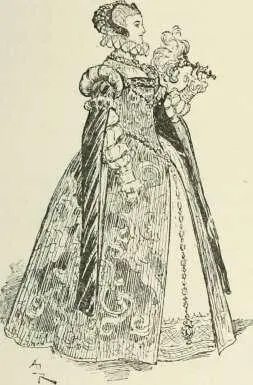
Court dress.
of the liead, indeed to the summit of the head-dress. The painted face thus framed in sharp-edged lace was like a brilliant flower or fruit, or rather like that of an idol, over-coloured and laden with jewellery and tinsel.
The bodice was actually covered with jewels, and what with gold, gems, beads, necklaces, earrings, and diamonds and pearls in their head-
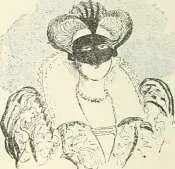
The Mask.
dresses, princesses and great ladies shone and twinkled all over. Head-dresses were very low, the hair was arranged in a point on the forehead and raised in rouleaus on the temples, forming the shape of a heart surrounded by a circlet set with jewels and pearls.
Rows of pearls formed square or lozenge-sliaped designs on the bodices and skirts. The girdle, with very long ends, was also of jeweller's work ; at one extremity hung a small mirror, richly set, which the wearer had in her hand constantly, so that she might inspect the condition of her precious but troublesome attire, and especially the immense ruff, which was a serious inconvenience, with all its majestic elegance, on social occasions, and at the crowded Court entertainments.
It is easy to estimate what the burden of the costume of the period must have been, by merely looking at a picture in the Louvre which represents a Court Ball given on the marriaçje of the Due de Joveuse with the King's sister-in-law. This was a famous wedding, celebrated with unexampled splendour by twenty-five or thirty days' festivities, jousts and masquerades, during which the entire Court, jorinces and princesses, lords and ladies, vied with each other in the fantastic sumptuousness of their daily-changed costumes.
According to this picture, which is attributed to Clouet, lords and ladies competed for the palm of absurdity in their costumes. It shows us nothing but pointed bodices preposterously
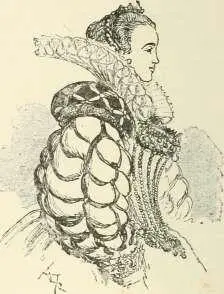
Padded sleeves.
tightened, and doublets with pointed abdomens, so that both men and women have the appearance of insects, the former lookino- like bio; bees, the latter like wasps.
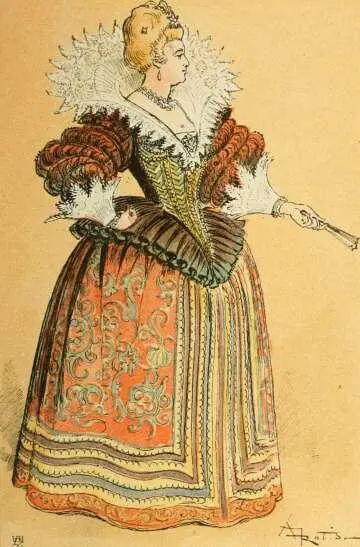
GRANDE TOILETTE MÉDICIS.
The ridiculously long-busked bodices have enormous padded sleeves, as thick on the shoulders as the whole body, and formed of a series of rolls and slashes, edged with pearls or gilded braid, with cuffs of fine lace to match the ruff.
The farthingale had been considerably enlarged, it was now of a bell-shape, or like an enormous soap-tureen turned upside-down ; over it two garments were worn, the upper-dress, of rich brocade or stuff covered with embroidery, was open so as to disjolay the under-dress of a different colour but equally ornamented.
When the troubles and the confusion of the time Avere at their worst, when Leaguers, Royalists, and Huguenots were shooting and hanging each other all over the kinçjdom, Damville, the eldest of the Count de Montmorency's three sons, who had taken up arras for a fourth party, that of the * politicals,' who were allied to the Huguenots in the South, became seriously indebted to the invention of the cumbersome farthingale. Beins; surrounded at Béziers, he Avas about to be taken, and in great danger, but one of his relations, Louise de Montagnard, the wife of
TiiC short Henri Trois cloak.

Francis de Tressan, carried hiui off in her coach, hidden under the spreading width of her immense farthingale, and j)assed him through under tlie very nose of his enemies.
This was the second instance of salvage by the farthingale, but there may have been many more which history has not deigned to record. The crinoline, an old acci[uaint-ance of our own, has no such deeds of high emprise to its credit. Its vast circumference was indeed also utilized, not for such dramatic escapes, but by fraudulently-ingenious females, who carried articles on which they ought to have paid duty slung on its hoops.
Читать дальшеИнтервал:
Закладка:
Похожие книги на «Yester-year; ten centuries of toilette from the French of A. Robida»
Представляем Вашему вниманию похожие книги на «Yester-year; ten centuries of toilette from the French of A. Robida» списком для выбора. Мы отобрали схожую по названию и смыслу литературу в надежде предоставить читателям больше вариантов отыскать новые, интересные, ещё непрочитанные произведения.
Обсуждение, отзывы о книге «Yester-year; ten centuries of toilette from the French of A. Robida» и просто собственные мнения читателей. Оставьте ваши комментарии, напишите, что Вы думаете о произведении, его смысле или главных героях. Укажите что конкретно понравилось, а что нет, и почему Вы так считаете.

